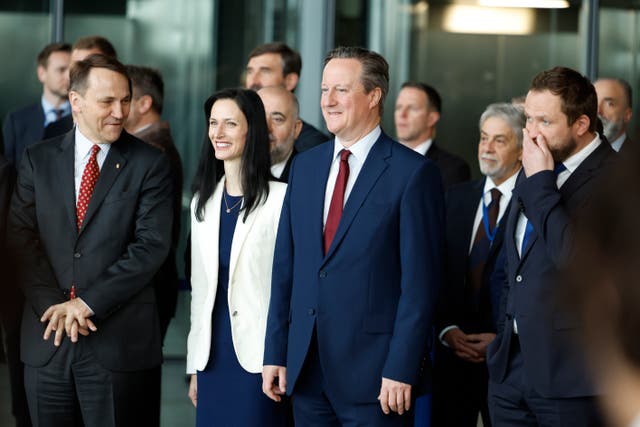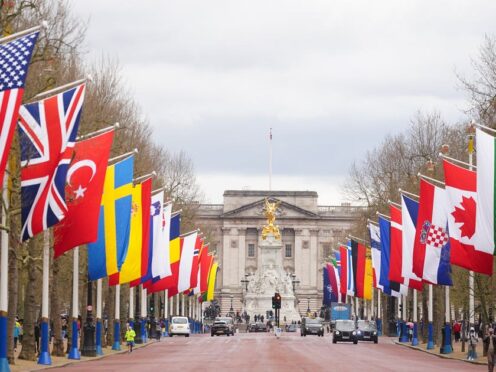Foreign Secretary Lord David Cameron has ruled out Nato troops being sent to Ukraine, to avoid giving Russian President Vladimir Putin a target.
The Conservative peer and former prime minister said Ukraine’s war with Russia “will be lost if the allies don’t step up”.
Lord Cameron said he will urge the US Congress to increase its financial support of Ukraine during a visit to the United States next week.

He told the BBC’s Ukrainecast: “What Nato is looking at is a Nato mission for Ukraine, not a Nato mission in Ukraine.
“It’s making sure that we use Nato’s architecture to help deliver some of the support that Ukraine needs.
“But fundamentally, I think that we should do everything we can to help Ukraine, that’s been Britain’s position.
“And I think it’s not escalatory to say we are going to help this independent sovereign country to fight off an aggressor, and we’re going to give it all the help we can in order to do that.”
In response to whether he could see Nato boots on the ground in Ukraine, Lord Cameron said “No”, adding: “I think that we don’t want to give Putin a target like that, and Nato can do lots of things to better co-ordinate the help we give to Ukraine.
“But fundamentally, for countries like Britain and all those supportive of Ukraine this is a question of political will. Do we have the patience? Do we have the will? Are we prepared to give the resources? Now in Britain’s case, definitely the answer is yes.”
He added: “If we can get that money out of the US Congress, if we can get Ukraine the arms they need, if we can show Putin that he can’t outwait us and that Ukraine is going to fight back and win back more of its territory.
“If we can do all those things, whoever gets in in November, we’ll look at the situation in Ukraine and… look at more and more Nato members spending 2% of their GDP on defence and say, this is a success story. I want to invest in this success.
“So turn Ukraine in the situation and Nato into the strongest possible alliance with the strongest possible prospect of success. And whoever wins in November 2024 would inherit a better situation.”
Lord Cameron is in Brussels for the second day of the Nato foreign ministers’ meeting, where he likened the current situation with Russia to the one Britain and France faced at the 1938 Munich Conference with Nazi Germany.

He said: “What we face today is as simple as then. We have a tyrant in Europe who is trying to redraw borders by force, and there are two choices. You can appease that approach or you can confront that approach.”
In his speech at an event in Brussels hosted by the Royal United Services Institute, Lord Cameron said Nato needed to demonstrate its “relevance” to younger people who had not grown up with the threat of the Cold War.
He said: “I think we have to win the argument for Nato all over again with a new generation, a generation that can see, yes, look at the threat that Ukraine has faced from Russia, but I think we need to go back to a more foundational argument, which is this.
“Fundamentally, the greatness of Nato is it allows countries to choose their own future.”
